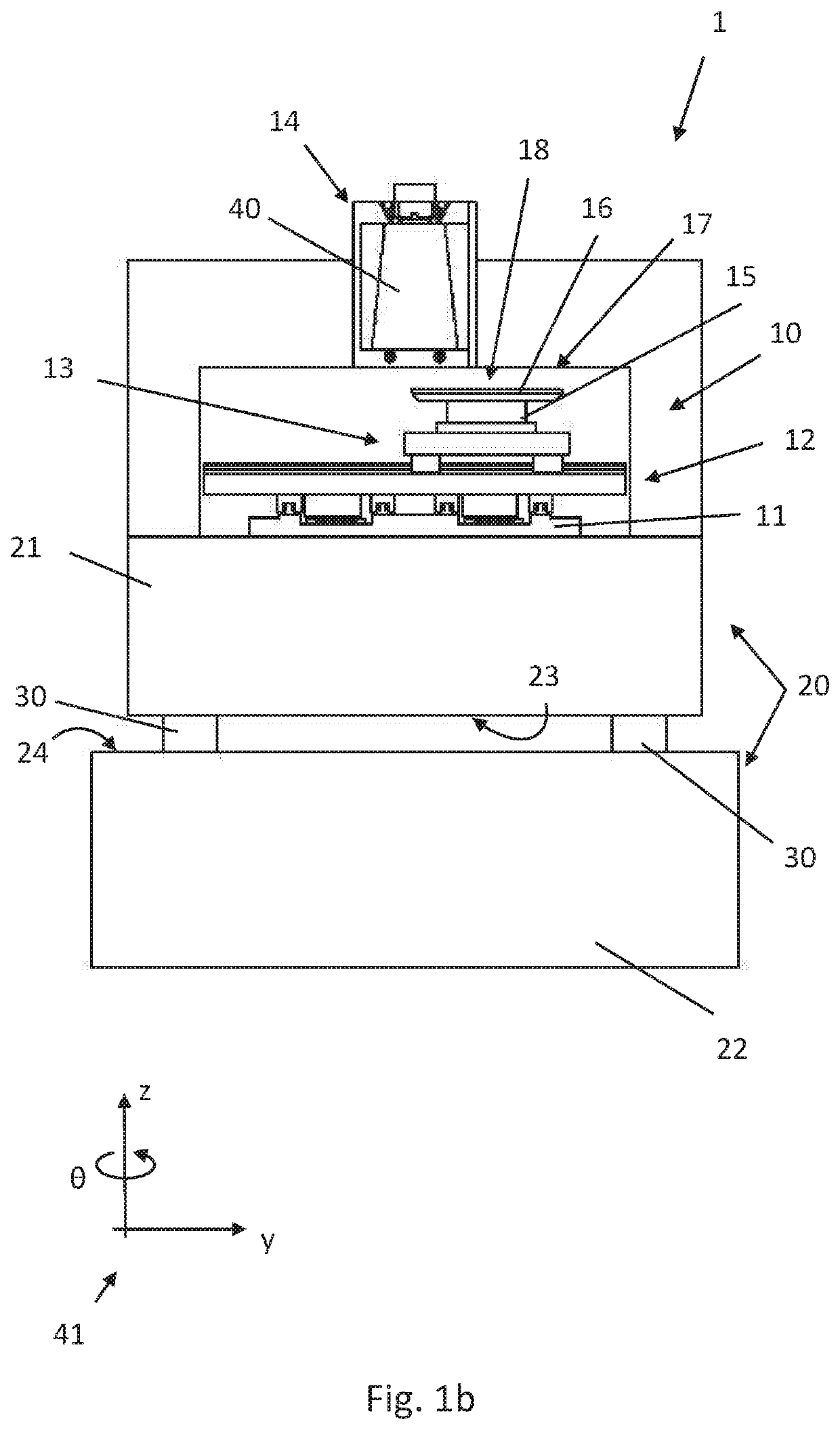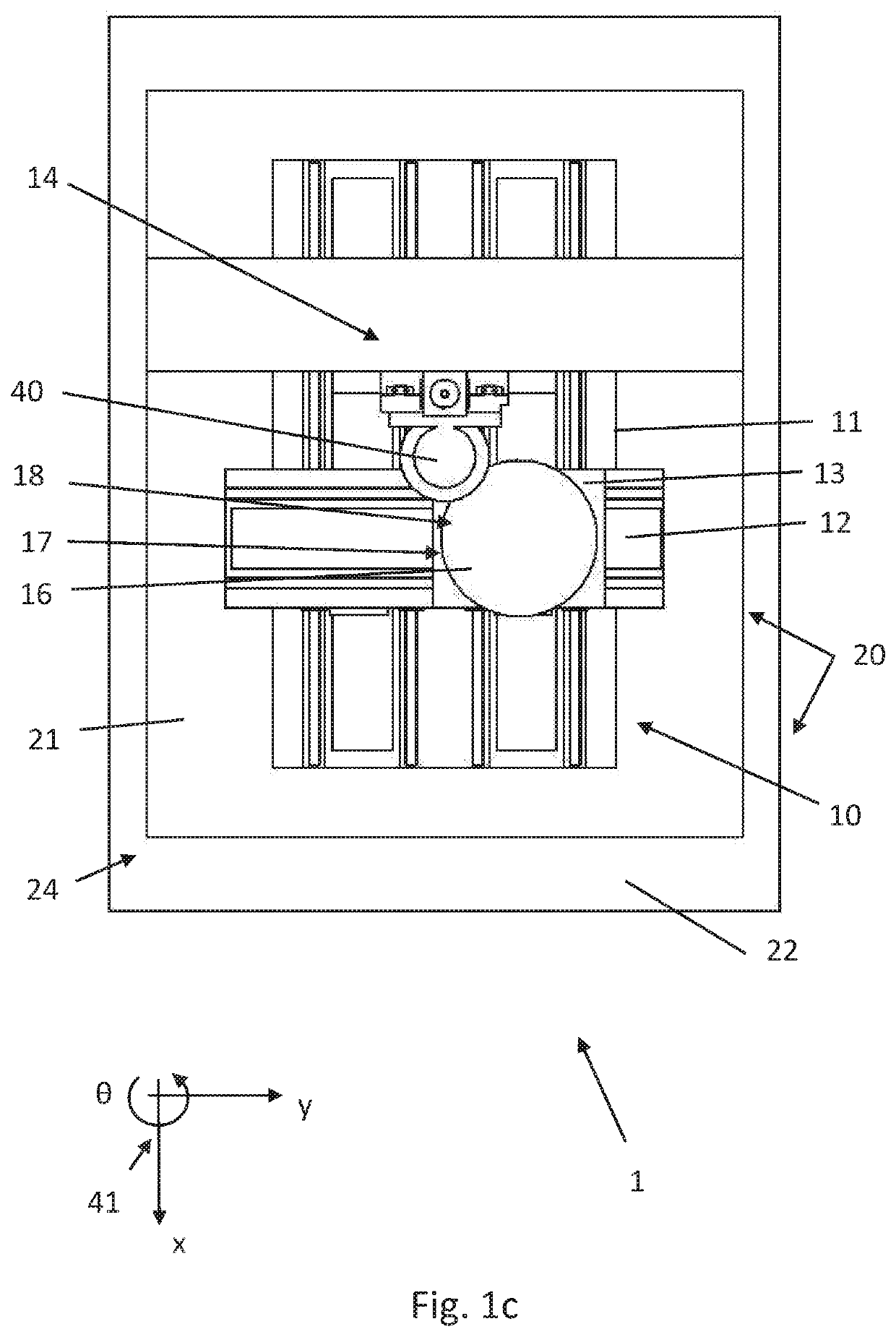Positioning arrangement
a positioning arrangement and positioning device technology, applied in the direction of positioning apparatus, metal-working machine components, manufacturing tools, etc., can solve the problem that the stationary part of the positioning device cannot move freely relative to the base element, and achieve the effect of low spring constant and low restoring for
- Summary
- Abstract
- Description
- Claims
- Application Information
AI Technical Summary
Benefits of technology
Problems solved by technology
Method used
Image
Examples
Embodiment Construction
[0035]Shown on FIG. 1a-1c is a schematic exploded view of a first possible exemplary embodiment for a processing table 1, for example for semiconductor microstructures or other workpieces.
[0036]Actual processing is accomplished with the positioning table 10, which in terms of its basic structural design essentially corresponds to a positioning table of the kind common in prior art and also industrially widely used. The positioning table 10 comprises a pedestal 21, which usually has a comparatively large mass. The pedestal 21 is used to secure the “actually” stationary plate 11 of the positioning table 10, for example which comprises guide rails or travel rails for a movable carriage. The pedestal 21 also has mechanically fixedly secured thereto a support arm 14, on which a processing head 40 is in turn mechanically fixedly secured. As a consequence, the pedestal 21, support arm 14, processing head 40 and stationary plate 11 of the positioning table 10 are mechanically coupled togeth...
PUM
 Login to View More
Login to View More Abstract
Description
Claims
Application Information
 Login to View More
Login to View More - R&D
- Intellectual Property
- Life Sciences
- Materials
- Tech Scout
- Unparalleled Data Quality
- Higher Quality Content
- 60% Fewer Hallucinations
Browse by: Latest US Patents, China's latest patents, Technical Efficacy Thesaurus, Application Domain, Technology Topic, Popular Technical Reports.
© 2025 PatSnap. All rights reserved.Legal|Privacy policy|Modern Slavery Act Transparency Statement|Sitemap|About US| Contact US: help@patsnap.com



